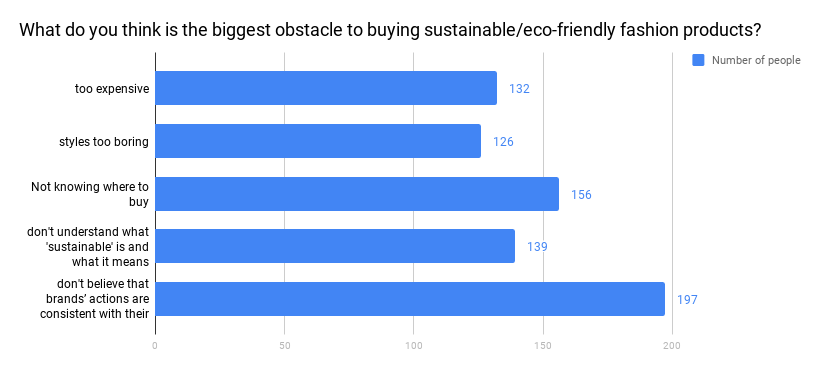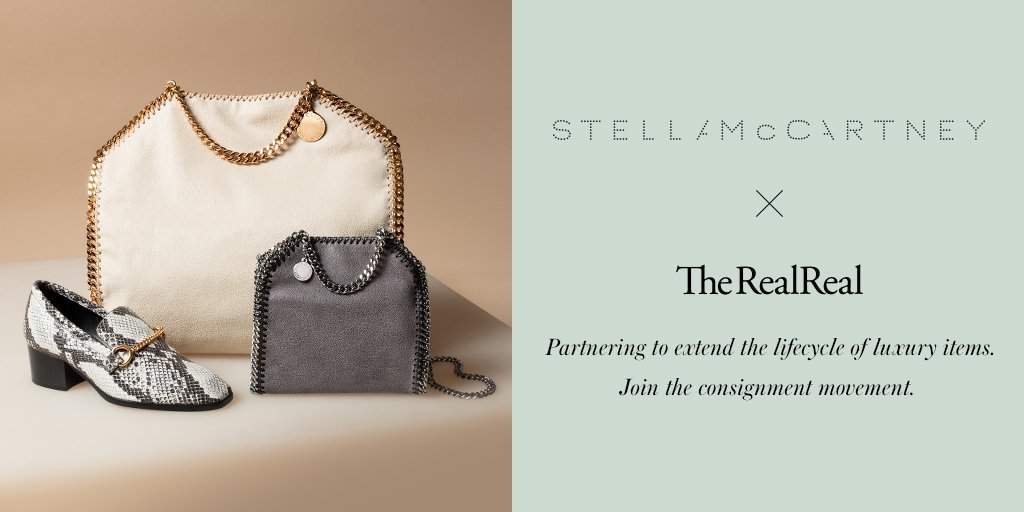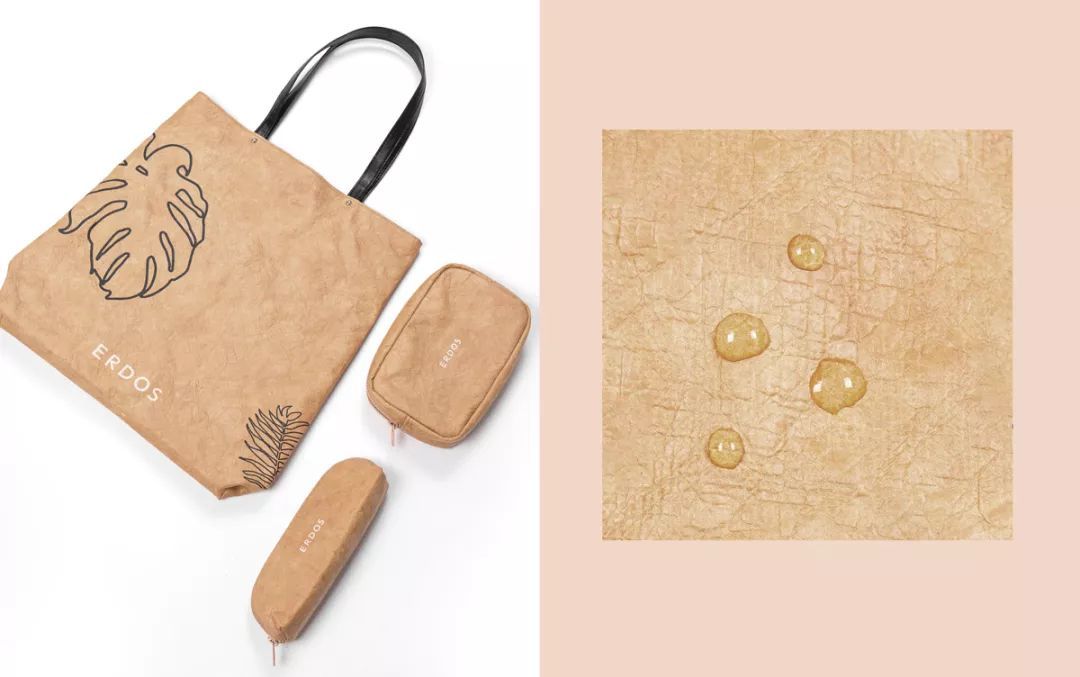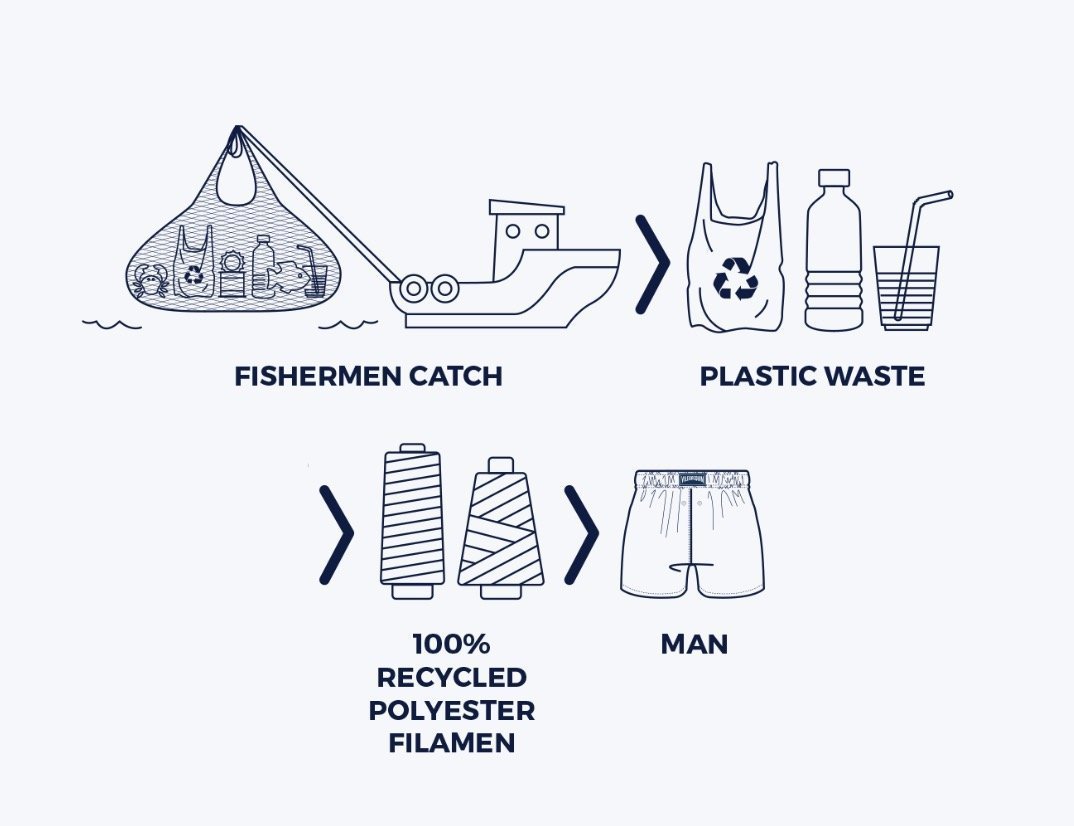What Is the Biggest Obstacle To Buying "Sustainable Fashion"? 26% Still Doubt Brand Sincerity
October 10,2019
The sustainable fashion trend is sweeping the world, providing new opportunities for the fashion industry, and opening a new window for brands to advocate individuality and transform like-minded people into loyal customers. As the earliest fashion business media in China to report global sustainable fashion trends, Luxe.CO launched theТ тGlobal Sustainable Fashion Monthly ReportтТ last November, communicating extensively with professionals in the fashion industry. Now, it is not only international brands, but also local Chinese brands that have started to launch product lines centered on the concept of sustainability. A group of emerging brands created by fashion entrepreneurs even take "Sustainability" as part of their DNA. However, it is undeniable that sustainable fashion is still cutting-edge and perhaps even a little vague for most local Chinese consumers. When major fashion brands enthusiastically express their opinion without a deep understanding of users, it can backfire by over-marketing.
Faced with young high-end consumers in China, Luxe.CO recently conducted a small survey on sustainable fashion consumption and an in-depth study through one-to-one interviews.
Survey: What do you think is the biggest obstacle to buying sustainable/eco-friendly fashion products?
At the top of the list, 26% of the 457 participants in the survey said that they "don't believe that brandsт actions are consistent with their wordsт. This was followed by 21% saying that they did тNot know where to buyт, while 19% of them "don't understand what 'sustainable' is and what it means". The proportions who said sustainable fashion was "too expensive" (18%) or "styles too boring" (17%) were small, but not negligible.

Note: the percentages of the options were calculated by rounding
One-to-one Sampling Interview ( a total of 8 people.) :Т
Q: Do you recognise and accept the concept of sustainable fashion? What is your understanding of this?
Q: Do you recognize and accept the concept of sustainable fashion? What is your understanding of it?
DoraяМ"I agree with it. After all, it is good for the protection of environmental resources and other aspects. I think that the sustainability in this type of fashion permeates from the materials to the printing and dyeing methods, production methods, storage methods, etc."
JudyяМ"My understanding is that environmental pollution is reduced in the production of this kind of fashion because environmentally-friendly production methods and raw materials are used. Consumers buy environmentally-friendly, long-life or second-hand fashion products. I actually agree with it, but it may take some time for me to accept second-hand products."
Editorтs comment:Т Young Chinese consumers may be more aware of sustainable fashion than brands originally thought. The trading of second-hand clothing is also a way for fashion brands to promote sustainable fashion. For example, in a pilot project launched by fast fashion giant, H&M, it has created a second-hand clothing section for its own brand & Other Stories brand on Sellpy, a Swedish second-hand trading platform in which it invests. Stella McCartney, a British designer brand, cooperates with The RealReal to promote customers to re-sell their Stella McCartney second-hand clothes through its platform to reduce the environmental pollution caused by waste clothing.

Q: Are you willing to buy sustainable fashion products?
Dora:Т "I'm willing to support it, but it depends on the design. I didnтt buy any last year and the price is not right."
Judy:Т "Yes, if the style is nice and the price is acceptable, I would love to pay a little more to buy it, but the truth is that I have not bought any because the price is really quite high."
Bai:Т "Reducing clothing consumption is also supporting sustainable development, but I think the sustainable fashion products in China are generally not stylish. I would buy a brand that has a sustainable collection that looks good. I would pay attention to it, but it's mostly about whether it looks good."
Nuo:Т "I think if the price is reasonable, the style is nice and its environmentally-friendly, it must take priority, but sustainability alone doesn't seem to be a prerequisite. In fact, I can't see the difference between sustainable and ordinary materials. Maybe I just have limited contact with it and I may feel it more deeply after using it for a long time."
Q: How much premium can you accept for a sustainable fashion product?
Dora:Т "It depends.... maybe 10-15% for a bag, but 5-10% or less for clothes because the style of clothes changes relatively quickly. The premise is a good design"
Diana:Т "I wouldnтt be able to accept much if it was just for sustainability."
Judy:Т "Maybe 15%."
Bai:Т "If it looks good on me and I really like it and it's environmentally-friendly, I wouldnтt mind paying a little more. I would give 5-10% if it's an environmentally-friendly brand, 15% or more if it's a limited edition."
Nuo:Т "Depending on the original price, 5-10% for clothes at most. This is the extent of my love for mother earth."
Editorтs comment:Т For consumers, sustainability is a plus for fashion products. When launching sustainable products, brands should also take product design and cost into account. Consumers will not pay more simply for the concept of sustainability.
Q: Where have you seen sustainability-related information/brands?
DoraяМтBrand WeChat official accountsт
DianaяМтWeiboт
JudyяМтMediaт
Bai:Т тWebsite recommendations and brandsт official website, and then emails for the launch of a new product.т
Nuo:Т тI seem to have seen it maybe from the introduction of new fashion products, when they indicated the materials they used for them.т
Q: What brands or groups do you know that practice sustainable fashion?
DoraяМ"I don't know many. I've heard that Gucci and Stella McCartney don't use animal fur. H&M has a clothes recycling project, and Mango seems to have some similar practices."
DianaяМтI like Vivienne Westwood. Sheтs always been an environmentalist.т
JudyяМтI remember that the Kering group seems very concerned about sustainable fashion.т
BaiяМтI like Stella McCartney. Her fabric is very good. Iтve bought underwear from them. There's a US brand called Marine Layer that I like, which is one of those California brands that make slouchy clothes from recycled wood. I learned about these brands from my work.т
MaierяМтStella McCartney and Freitag are very famous among architects and designers. They have stores in London. My friend bought clothes there.т
QяМDo you know any Chinese brands that practice sustainability?
Dora:Т "ERDOS, JNBY, and All Comes From Nothing."
JudyяМтI actually donтt know any Chinese brands.т
Editorтs comment:Т Although mass fashion information is available to consumers in the era of social media, there doesnтt seem to be much useful information about sustainable fashion. There is an average of 30-40 global sustainable fashion measures in each issue of the тGlobal Sustainable Fashion Monthly ReportтТ from Luxe.CO. However, these measures are hardly reflected in brandsт day-to-day activities, and it is still difficult for Chinese consumers to find knowledge of them.

Many fashion brands are currently increasing the exposure of sustainable fashion products with the help of fashion e-commerce. For example, Nordstrom, a high-end department store in the States, launched a summary of all sustainable products for consumersт convenience. There are currently more than 2000 types of product in this category. Net-a-Porter has also launched Net Sustain, an e-commerce platform for sustainable brands. All selected products must meet at least one of five key attributes, ranging from materials and processes to reducing waste in their supply chain. ASOS, the British fashion e-commerce company, has launched a sustainable products recommendation section, which summarizes products in line with the principles of sustainable fashion and recommends them in the Responsible Edit column to help consumers to find environmentally-friendly products more easily.
Social media channels are important for Chinese brands that practice sustainable fashion. ERDOS, which was mentioned by two interviewees, posts keywords such as "environmental protection", "sustainable fashion" and "recycled cashmere" on Weibo, WeChat and other social media platforms, and promotes them by using the spokesperson effect to emphasize that the brand is committed to developing sustainable fashion.

Q: What do you think of brandsт promotion of sustainable fashion?
DoraяМтIt's hard to keep up. I think most of them are just meeting the demands of the market, and to some extent, the pursuit of sustainable fashion is in conflict with the nature of the brand to make money.т
Diana:Т тI sometimes worry about whether environmentalists are going too far. To be honest, all fashion is built on excessive consumption to some extent. If people didnтt have the desire and demand excessive consumption and only bought basic styles, no-one would buy clothes with beautiful or unconstrained designs and the commercial use would be gone.т
Nuo:Т " I think it's a good thing to invest in the development and promotion of sustainable fashion if the gross margin of the brands can bear it, but if they lose money for a long time, they may have to wait until the market is ready to make a decision. Business is business; companies need to be profitable."
Q: Do you believe in brandsт commitment to sustainability?
Dora:Т "I think there must be some brands that match their words with deeds, but because this is such a hot topic now, it's hard to tell if a brand is really going to stick with it or follow suit. For example, even recycling old clothes cannot hide the fact that fast fashion has a short turnover cycle and encourages excessive consumption. It's hard to make fashion completely sustainable."
Judy:Т "I 80% believe it, but sometimes I think a brand may be trying to build goodwill and fit in with the trend rather than actually practicing sustainability, so it may fall short."
Bai:Т "Maybe I'm a bit brand-obsessed. Luxury brands and big brands like H&M are definitely fine, but I will look at other new brands. Because sustainability is a hot topic, there may be a situation of it not living up to its name. It also needs certain technology and capital to support it, so Iтll wait and see."
A:Т "One example is Reformation, which acquired a lot of financing, but the sales showed that it couldn't have been using the 'leftover fabric'. If it takes a reporter seeking the truth from the facts to see a trick, tens of thousands of the same hot style can be made. Thatтs how much cloth can be pulled out of the garbage."
Lilian Sun:Т тI don't really believe that brands will match their words with deeds, especially the Internet/niche brands that like to claim that they use environmentally-friendly materials, have zero waste and reduced carbon emissions and inventory. I feel this is a quick way for these brands to get closer to millennials/generation Z. Furthermore, there is no specific regulation/organization to test or monitor their claims."
Editorтs comment:Т Chinese consumers generally agree that sustainable fashion is significant, but they also expect brands to be serious about implementing sustainable fashion principles, rather than just marketing to cater for current trends and increase consumersт goodwill.
Conclusion
According to the тChinaтs New Generation Fashion Consumption Report 2018т released by Luxe.CO, 41.9% of young fashion consumers believe that social responsibility has a great influence on their perception of brands, while only 4.9% chose "completely unaffected". However, this small survey and sample interview made it clear that consumers are not spectators of sustainable fashion, but participants. When practicing sustainable fashion, brands need to pay attention to consumers' right to know and increase the exposure and transparency of sustainable-related measures.












Comments